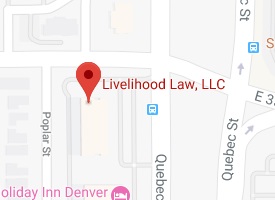
Workplace discrimination is more common than you might think. According to a report in Harvard Public Health, more than half of black Americans and almost one-third of American women reported workplace discrimination. Understanding what constitutes workplace discrimination can be confusing; let’s take a look at some frequently asked questions.
FAQ: What is a “protected class”?
“Protected classes” were established by Congress under the 1964 Civil Rights Act. These classifications include the following:
- gender
- age (over 40)
- ethnicity
- national origin
- religion
- relationship or marital status
- disability: mental, physical, emotional, or other
- sexual preference
FAQ: How do I know if what I am experiencing is workplace discrimination?
The Equal Employment Opportunity Commission (EEOC) is responsible for protecting Americans from employment discrimination, which is defined as treating an individual differently or less favorably due to their protected class. Workplace discrimination may be exhibited by a failure to hire or promote; wrongful termination; demotion; changes in work responsibilities, job assignments, or shifts; pay cuts; hostile work environment or harassment; failure to provide raises and bonuses, and other actions.
FAQ: What kind of evidence do I need to make a claim of workplace discrimination?
To prove a claim of employment discrimination, you can use two forms of evidence: direct evidence and circumstantial evidence. Direct evidence of workplace discrimination includes statements by a manager or supervisor that directly relate to the adverse action taken against you to your protected class status. Indirect or circumstantial evidence may consist of a range of behaviors or actions that lead to an assumption of discrimination. Every workplace discrimination case is different, with unique circumstances, and each claim must be evaluated on its individual merits.
FAQ: What is the “McDonnell-Douglas Test”?
The “McDonnell-Douglas Test” was named for a Supreme Court decision. According to this test, an employee must be able to answer “yes” to four questions to raise a presumption of discrimination:
- Are you a member of a protected class?
- Were you qualified for your position?
- Did your employer take adverse action against you?
- Were you replaced by a person who is not in your protected class?
If an employee can demonstrate at least these four things, the law will presume that your protected class status was the basis for the adverse action.
FAQ: What is the most common form of workplace discrimination?
The most common form of workplace discrimination isn’t what you might think. It is not discrimination due to ethnicity, gender, or disability, although those types of discrimination cases make up a third of all the claims filed. In fact, according to the EEOC, most workplace discrimination claims filed each year are for retaliation. More than half of the claims filed fall under this category. Under EEO laws, employees have the right to complain about any workplace treatment that they believe constitutes illegal job discrimination. Employers are prohibited from punishing employees or job applicants for asserting their rights to be free of employment discrimination.


